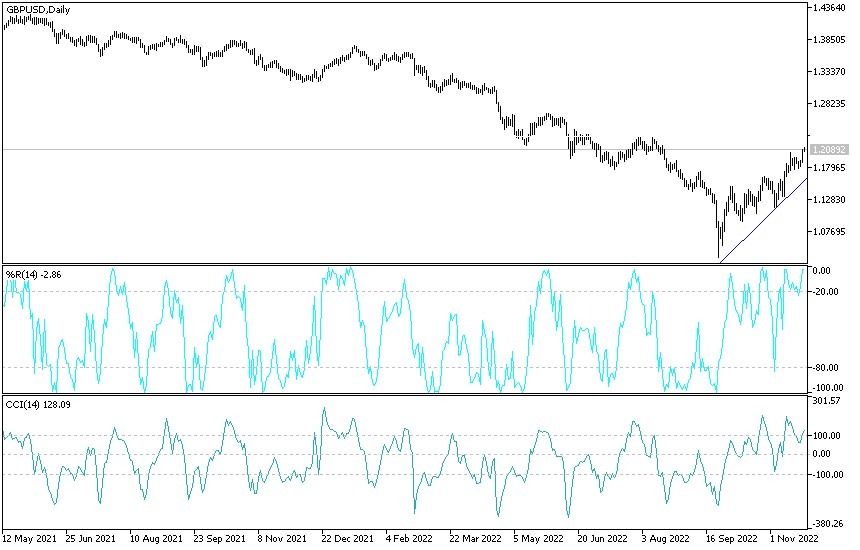The GBP/USD exchange rate jumped again above the 1.20 psychological resistance level for the first time since August in the brief mid-week trading. The US dollar's losses grew after the release of data indicating that major US industries have slipped further into recession this month and that the domestic labor market may start to break.
- Retracement gains reached the GBP/USD pair towards the resistance level of 1.2080, its highest in three months.
- The US dollar was sold broadly during most of yesterday's trading session, but the greenback's losses deepened when the Labor Department reported the largest one-week increase in new US jobless claims since August and after the S&P Global PMI fell to new post-pandemic lows.
- This is disappointing but not entirely surprising,” says Ian Shepherdson, chief economist at Pantheon Macroeconomics.
"We are increasingly inclined to believe that the trend in claims is now rising slightly, as businesses come under increasing pressure from aggressive Fed tightening," he adds, referring to the unemployment claims data.
The new US jobless claims reached 240 thousand during the week until last Friday in a result that seems to incite a rise in the price of the pound against the dollar towards the level of 1.20, despite the release of the global surveys of Standard & Poor's Purchasing Managers in late, which enabled the pound Sterling managed to rise again above 1.20. Standard & Poor's global surveys of purchasing managers indicated that activity in manufacturing and services fell at its fastest pace in August this month and at its sharpest pace since shortly after the 2008 financial crisis as recession deepened in both sectors.
New orders from domestic and international customers fell in November while hiring slowed in both sectors as high inflation and higher interest rates weighed on demand, although there were signs that price pressures may now abate. Accordingly, S&P said, “Reflecting the slower growth in input costs, companies raised their selling prices at the slowest rate for just over two years. The pace of fee inflation was significantly weaker than seen earlier in the year.”
The dollar's exchange rate losses deepened after the release of PMI data only for the dollar to stabilize shortly after when the Census Bureau said US new home sales rose by 632,000 in October, up from a previous 588,000 and the first increase in three months. “It is impossible to match the jump in sales with the collapse in mortgage demand,” says Shepherdson of Pantheon macroeconomics. He adds: “This price strength cannot be sustained, even if the current home stock remains low; We estimate that prices need to go down about 20% before they reach a more sustainable level in terms of income.”
The data came along with University of Michigan figures indicating that consumers' inflation expectations have eased this month in a result likely to be welcomed by the Fed, which may be why the dollar's respite was short-lived.
GBP/USD analysis today:
According to the performance on the daily chart below, the GBP/USD price is moving in an upward trend, which culminated in testing the psychological resistance level 1.2000. At the same time it moved the technical indicators towards overbought levels. I expect the higher ones to consider selling the Sterling Dollar. The bulls' closest targets are currently 1.2085, 1.2130, and 1.2200, respectively. On the other hand, a break of the current trend may occur if the currency pair moves towards the support levels 1.1860 and 1.1690, respectively, according to the performance over the same time period. The currency pair does not await important British data, there is an American holiday, and investor sentiment is the first driver of the currency pair.
Ready to trade our Forex forecast? Here’s a list of some of the best Forex trading platforms to check out.


